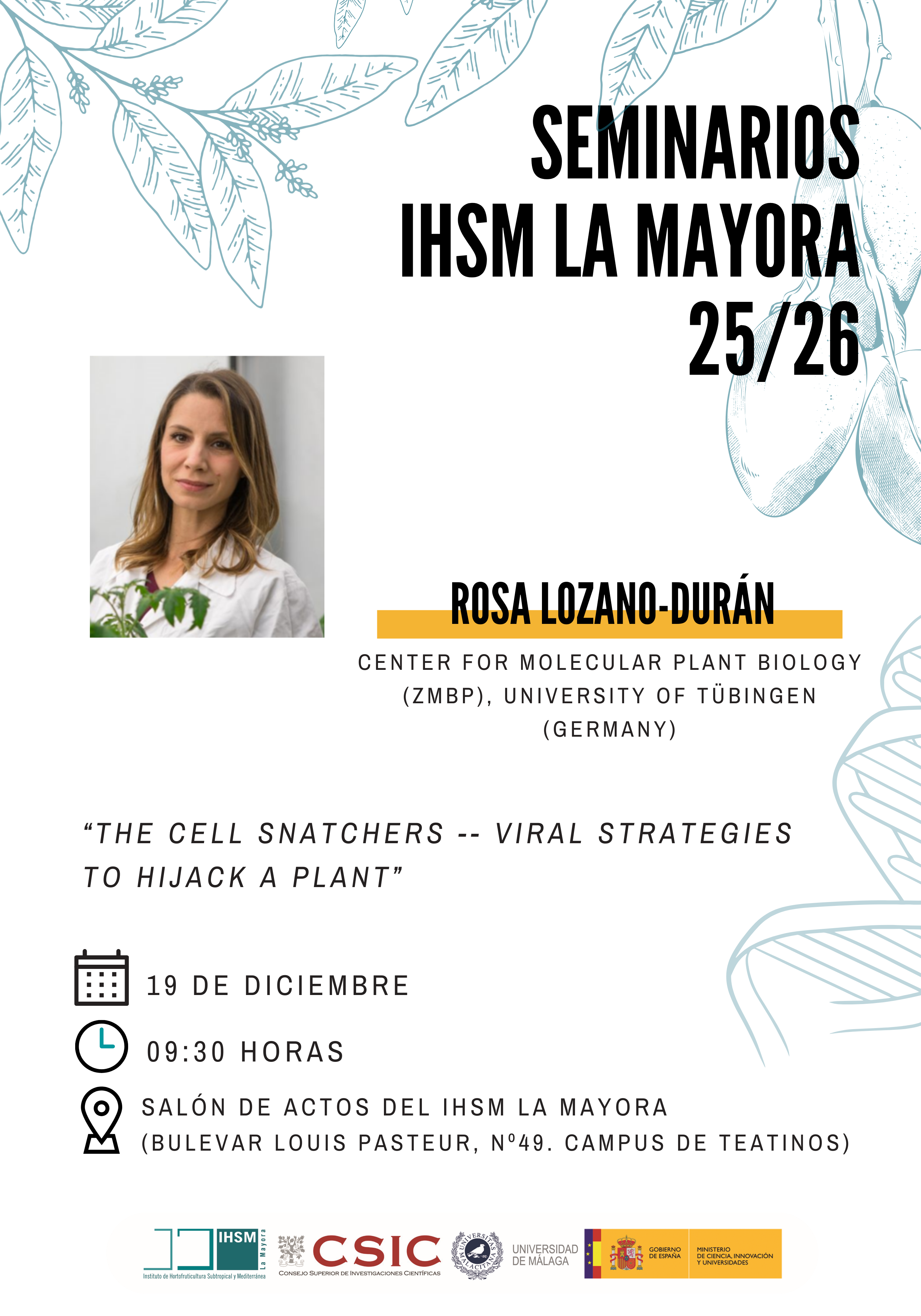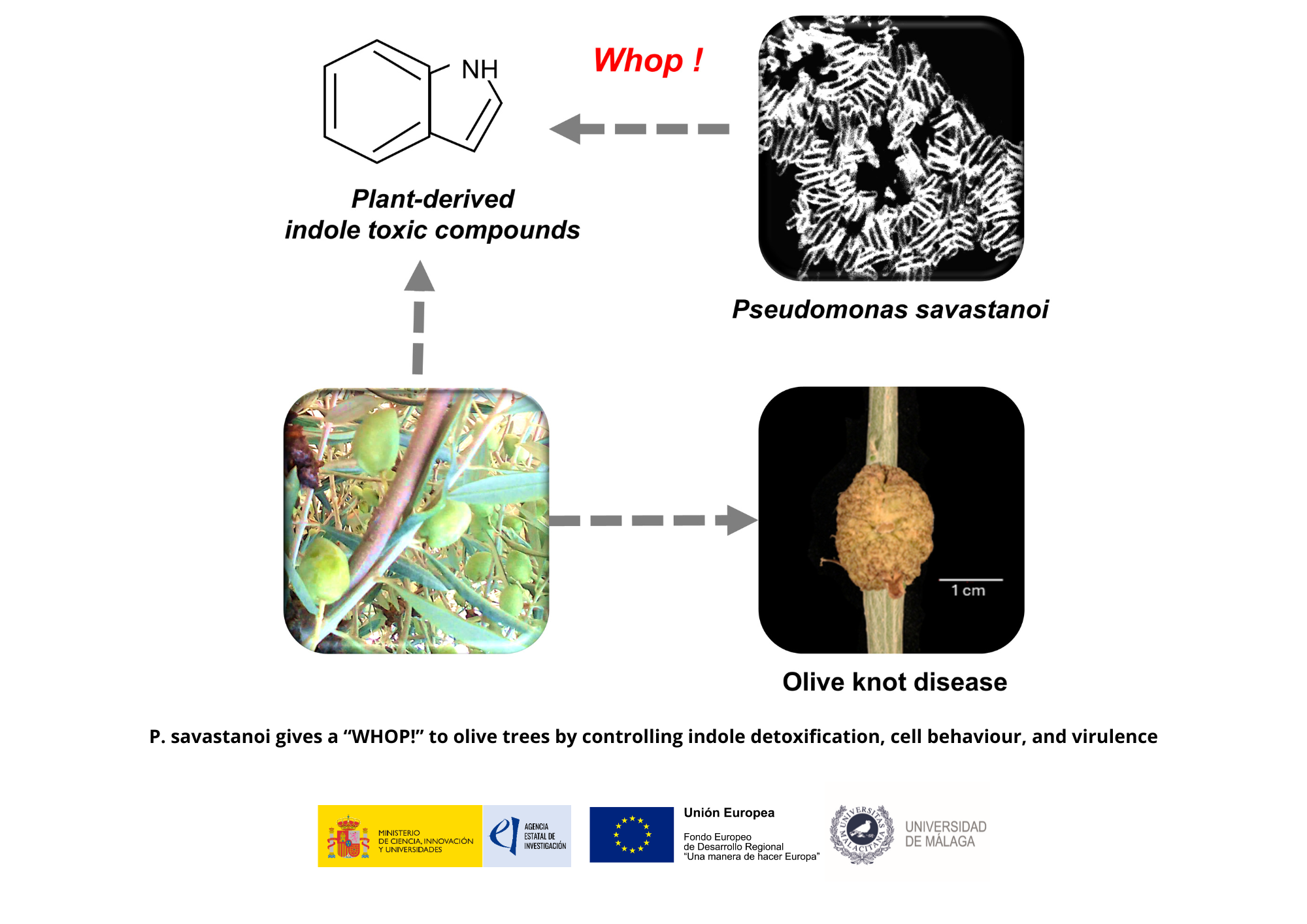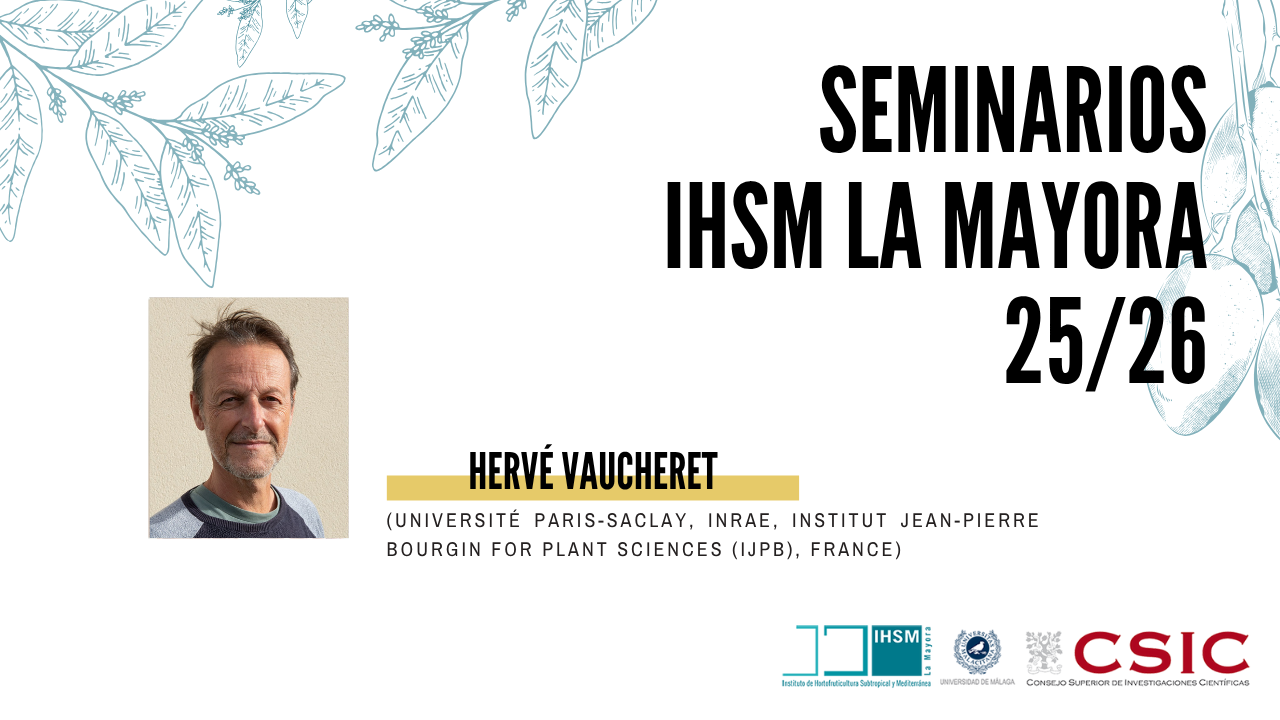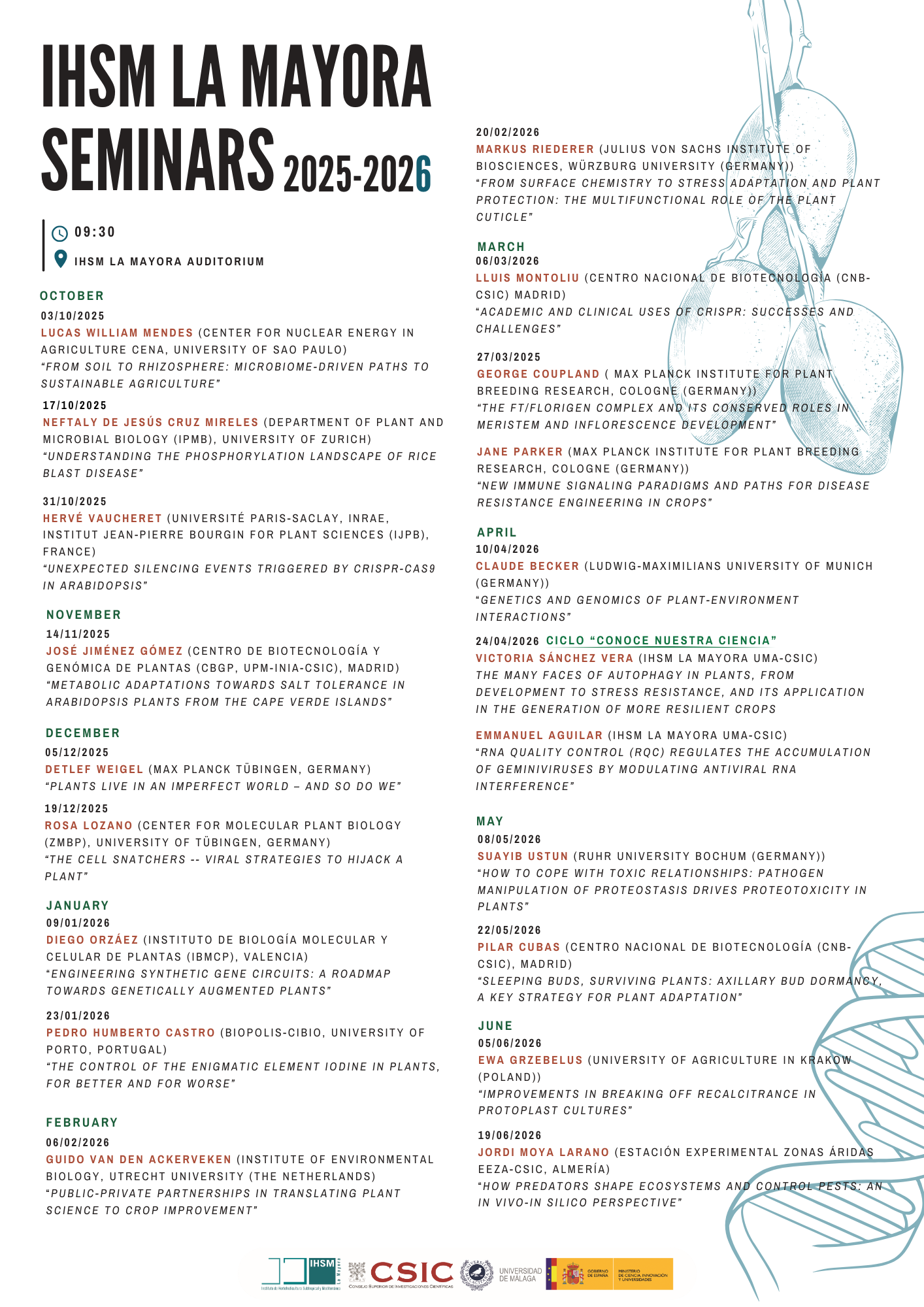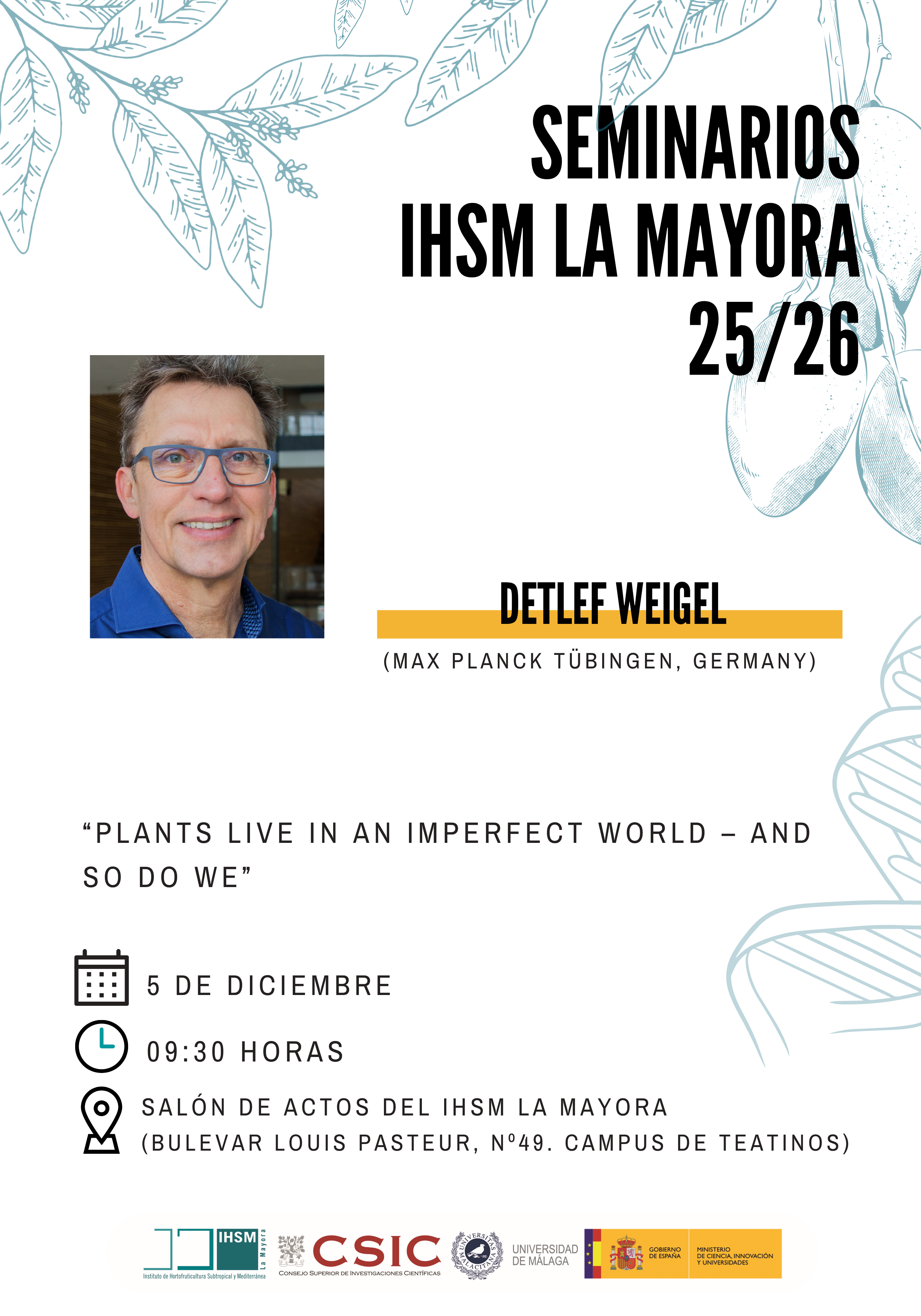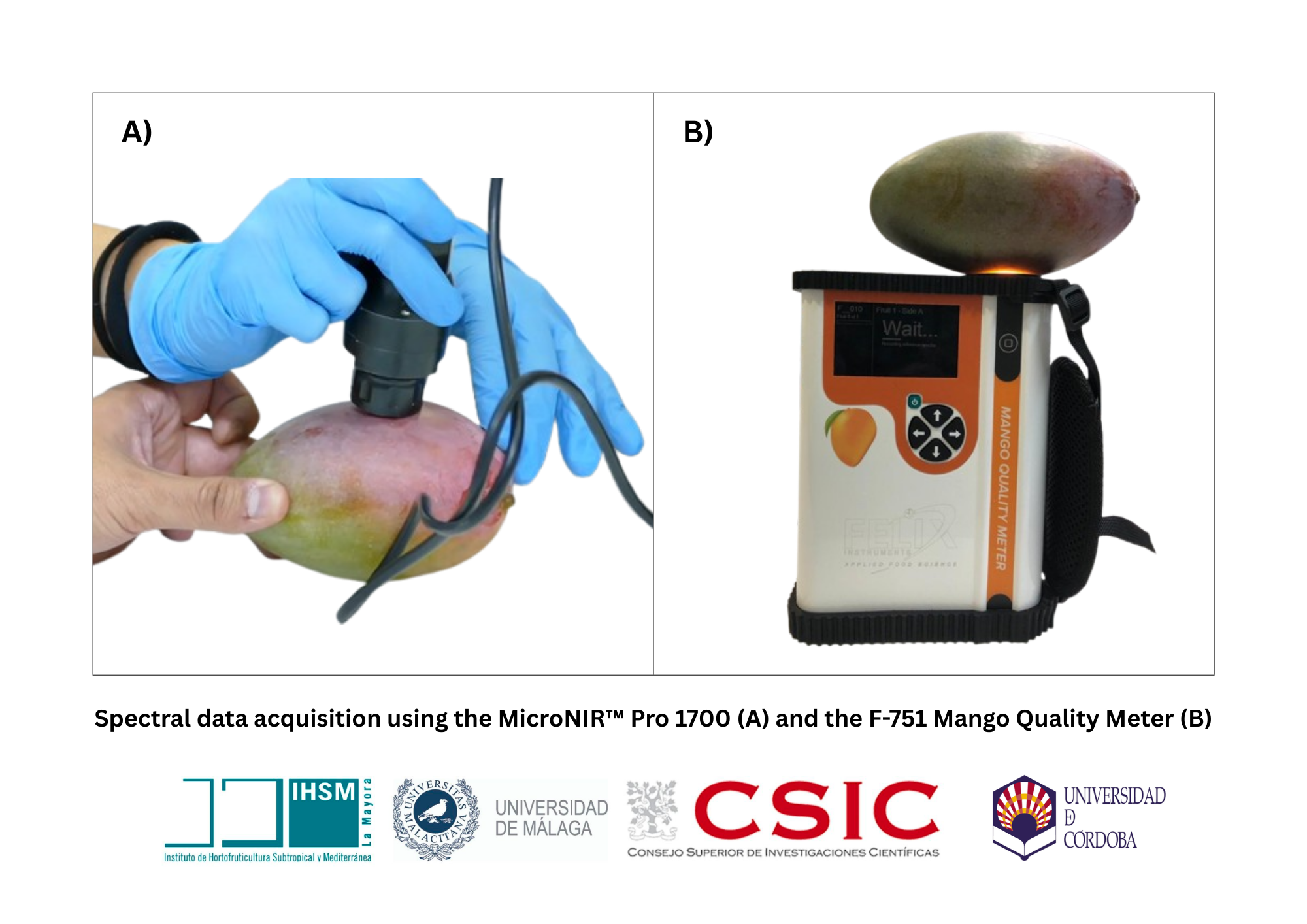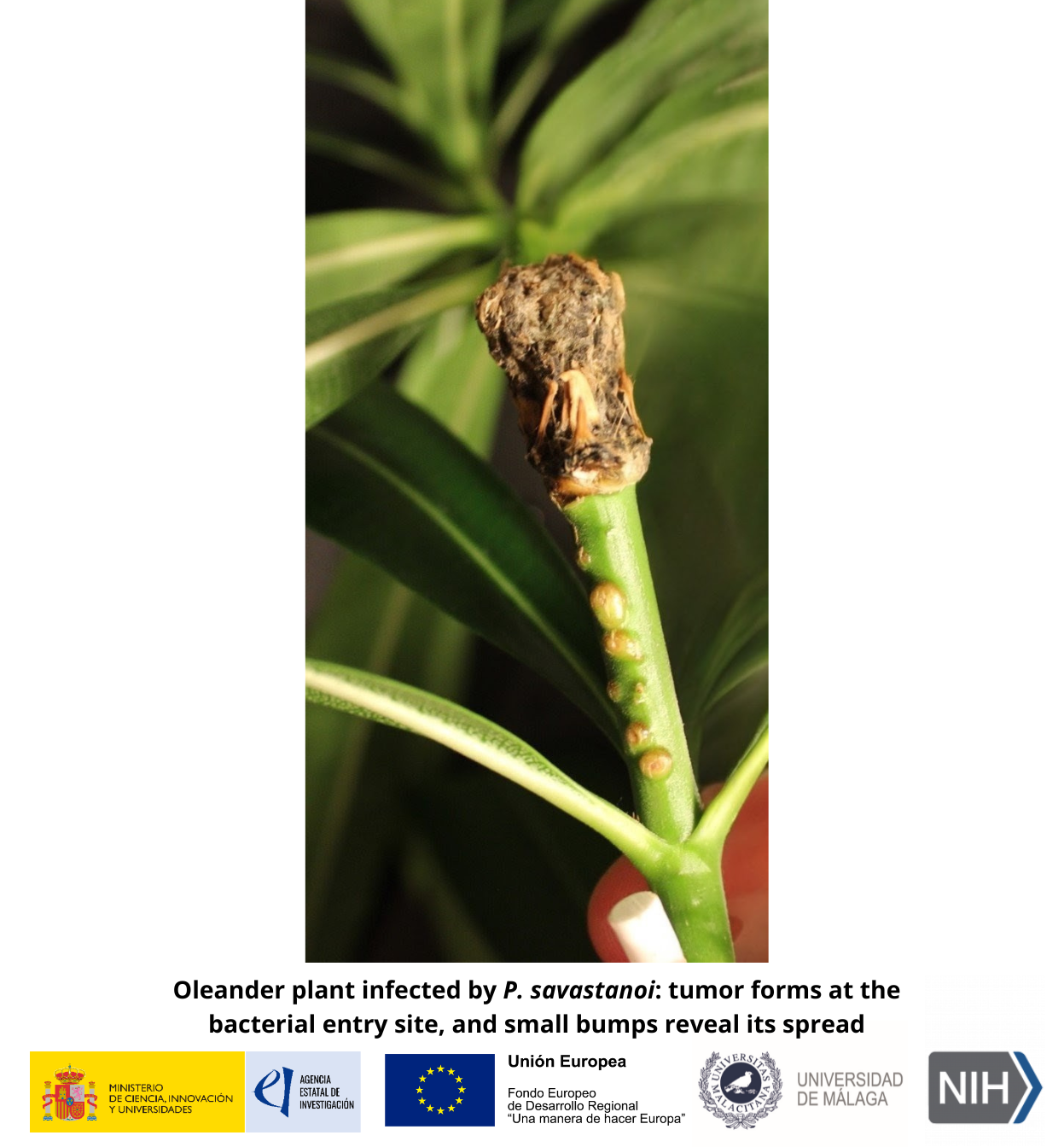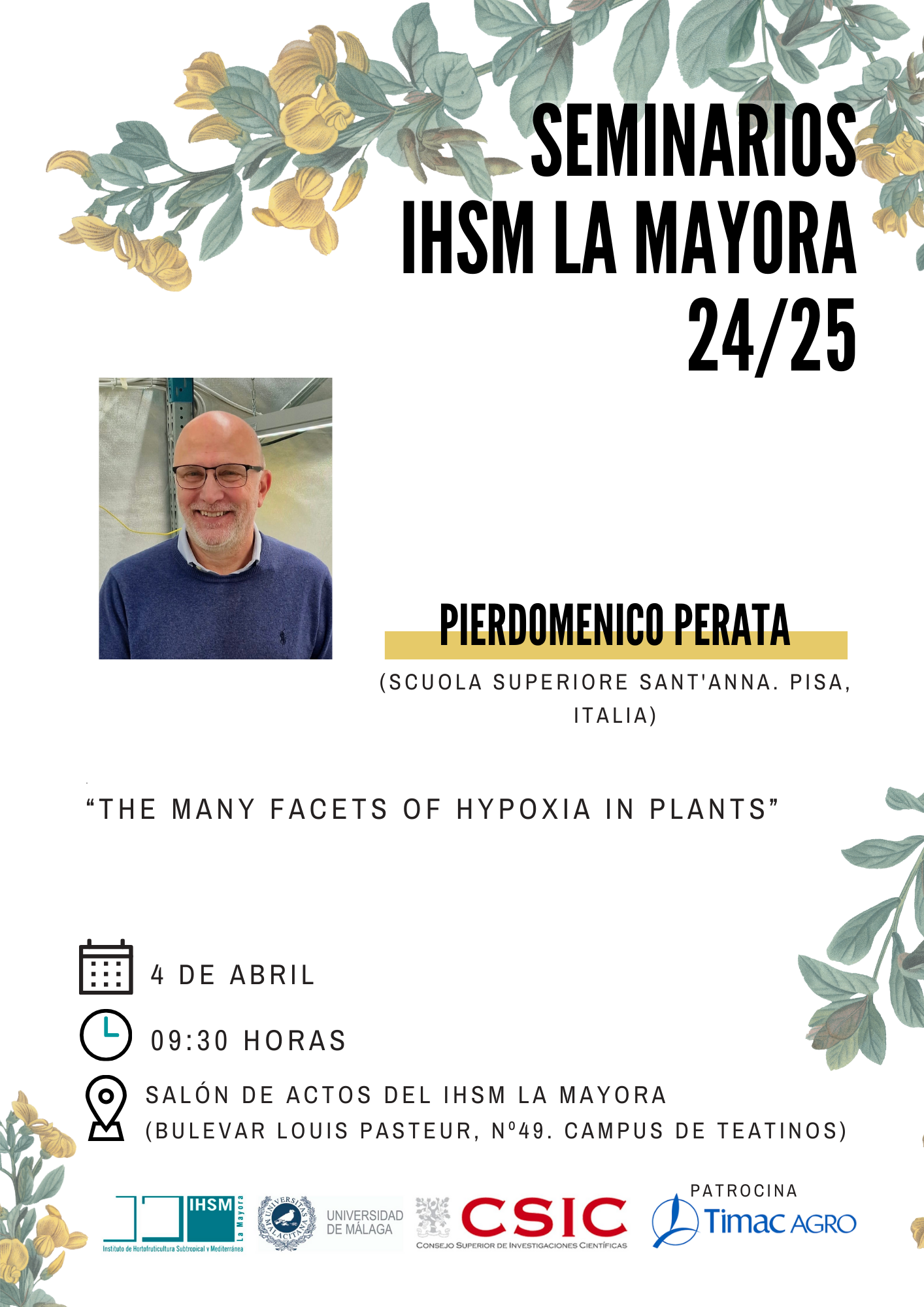
Seminarios IHSM La Mayora - Pierdomenico Perata (Scuola superiore sant'anna. Pisa, Italia)
Plants are aerobic organisms and need oxygen for growth and development. Severely reduced ambient oxygen is incompatible with aerobic metabolism, a condition known as hypoxia. Hypoxia can be generated by an acute external event, such as excessive rain leading to complete or partial submergence, but also chronic, in hypoxic niches that exist in specific tissues. Recently a third type of hypoxia was discovered, cyclic hypoxia, that occurs diurnally in a spatiotemporal manner. During acute hypoxia, plants suffer stressful conditions because of adverse environmental conditions limiting oxygen availability. Soil waterlogging or complete plant submergence following heavy rainfall are examples of acute hypoxia that limit oxygen availability. The frequency of extreme rainfall events, amplified by climate change, has risen globally, making acute hypoxia a severe challenge for agriculture. Regardless of environmental conditions, actively maintained chronic hypoxic environments have been shown to be present in plants. The shoot apical meristem is hypoxic, and the gradients of oxygen likely serve as positional cues guiding leaf development. Cyclic hypoxia in plants was recently identified as a diurnal nocturnal reduction in oxygen levels within young emerging leaves during the night. This initiates a mild transient hypoxic response through stabilization of ERFVIIs and activation of downstream signaling, which is reset when photosynthetic oxygen production re-establishes normoxia during the day. Consequently, a metabolic shift from aerobic to hypoxic pathways occurs at night, fostering competition between aerobic and hypoxic metabolism. This adaptation allows the plant to sustain leaf growth based on carbon sources and the availability of oxygen.

